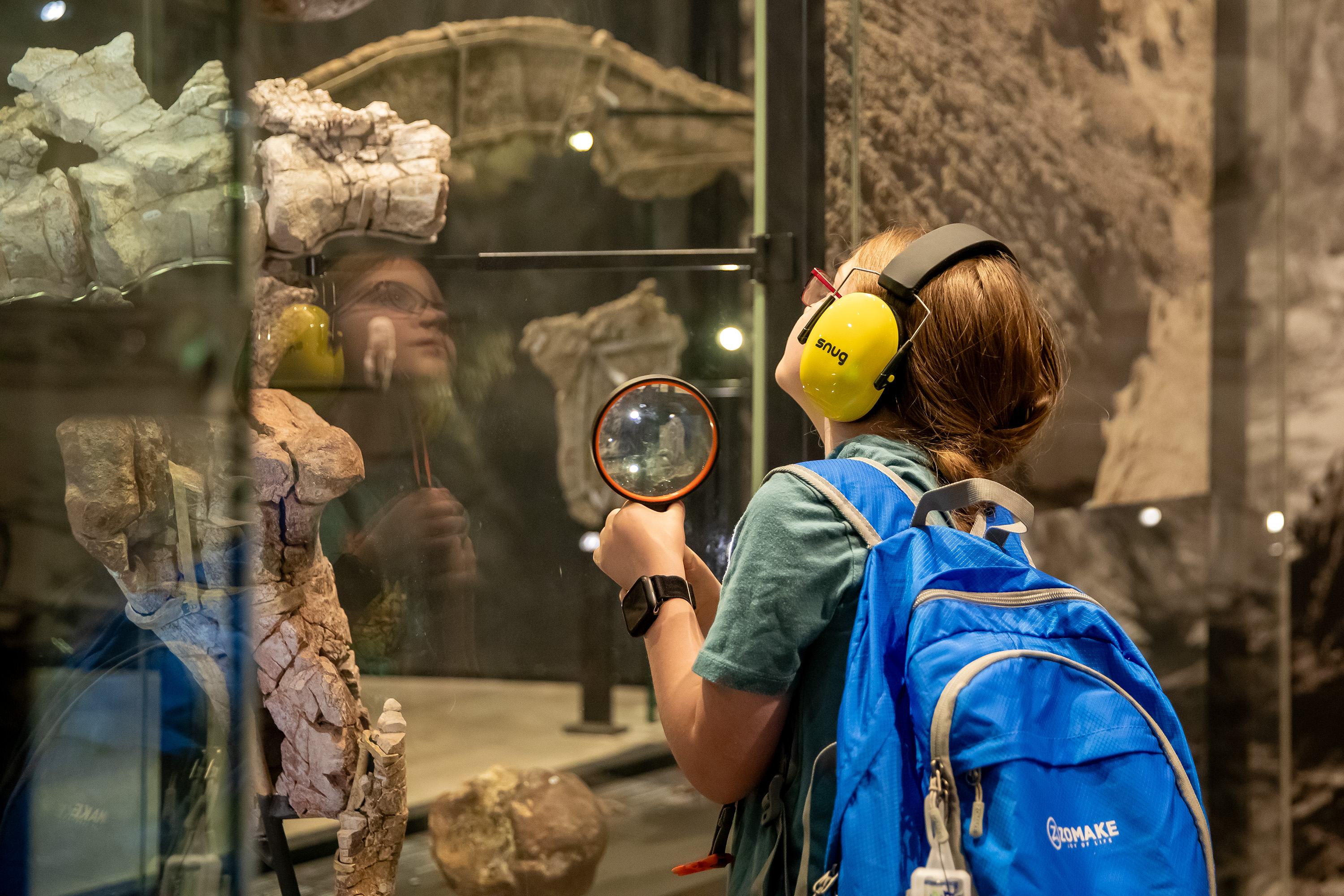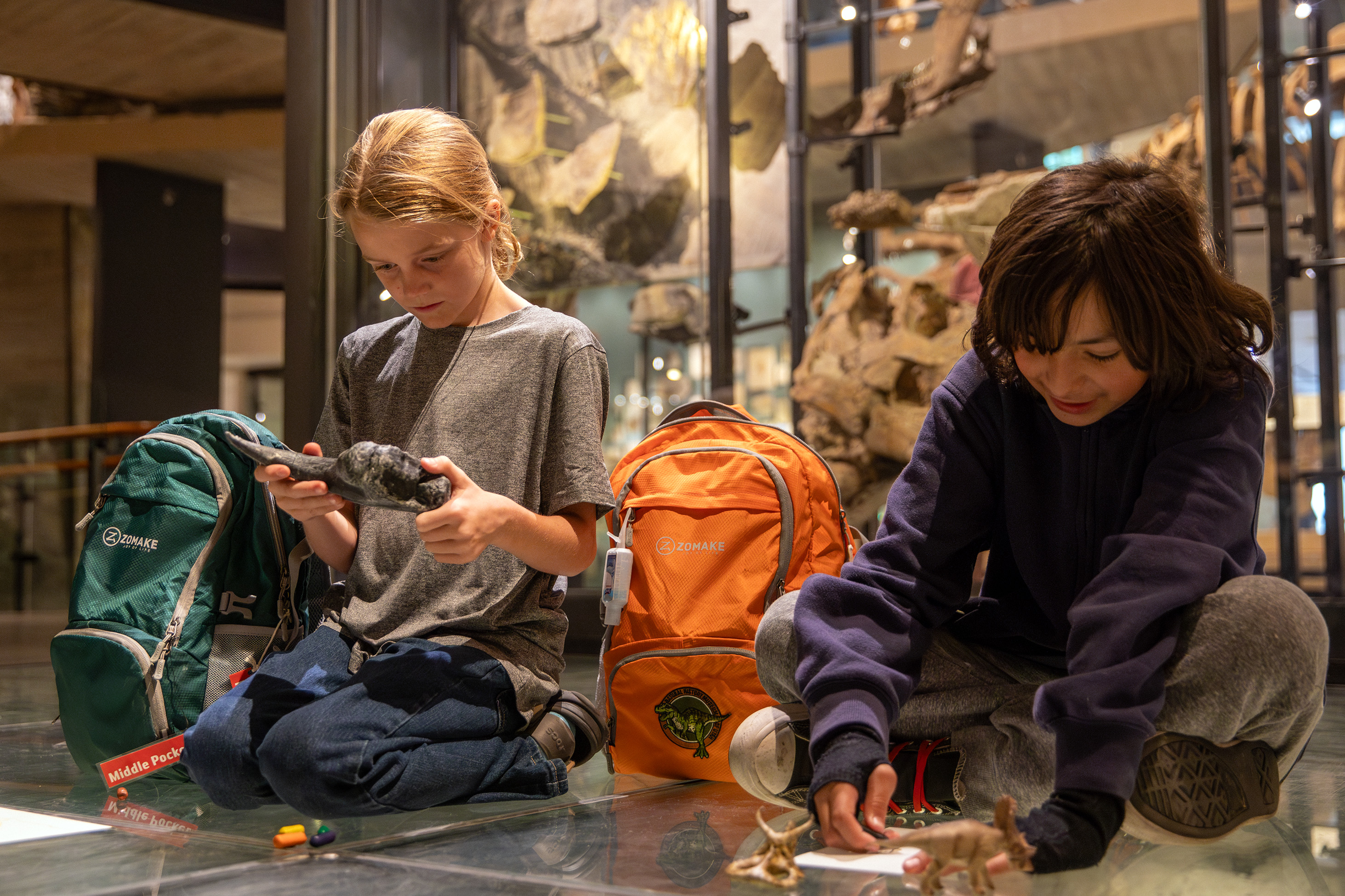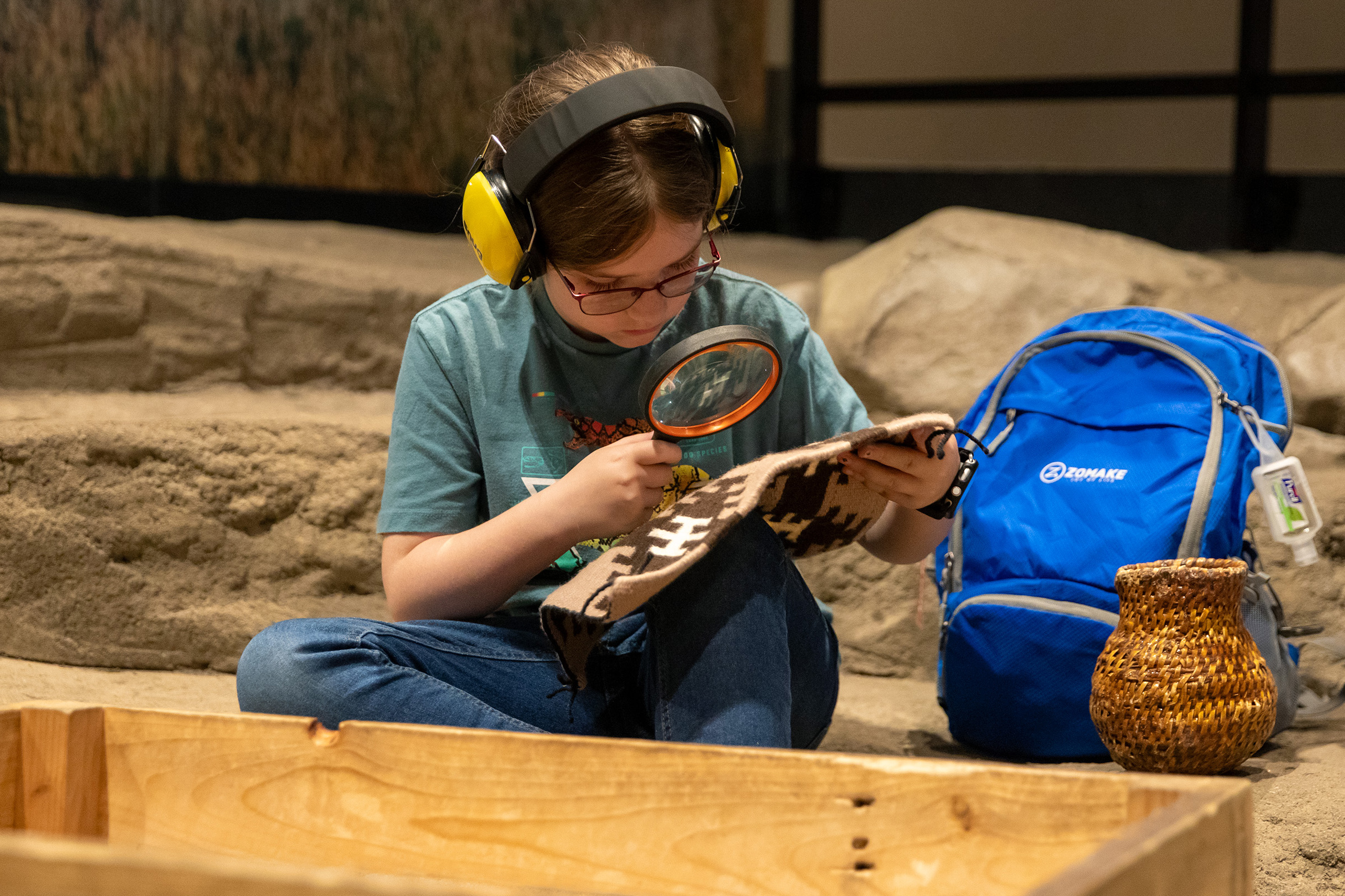Mark Johnston, Marketing Manager at the Natural History Museum of Utah
When visiting the Natural History Museum of Utah (NHMU), the Utah Museum of Fine Art (UMFA), or other attractions in Salt Lake City, you might come across signs promoting “sensory bags” (or "family backpacks" at the UMFA). These are not terms most museum goers will be familiar with, but for a select audience these sensory bags can make all the difference between an enjoyable family experience or a stressful, all-too-brief outing.
Before we delve into the sensory bags themselves, let’s first define sensory processing. This term refers to one’s ability to organize and make sense of all the information received through our seven senses: visual, auditory, taste, smell, touch, proprioception (muscle and joint movement), vestibular (balance and head movement), and interoception (a sense of what’s happening inside our body). Well-developed sensory processing allows an individual to effectively receive and organize information, helping them make sense of the world around them.

Photo by Eliza Petersen / NHMU
However, individuals with a sensory processing impairment can struggle to organize sensory input, which can make even everyday activities a challenge. Too little stimulation (hyposensitivity) will leave these individuals feeling under-stimulated and bored, forcing them to seek more stimulation or attention. Conversely, too much stimulation through one or a combination of senses (hypersensitivity) will leave them feeling overwhelmed, often resulting in a fight (irritability), flight (avoidance), or freeze (shutting down) response.
You can see how sensory processing impairment might impact behavioral and social development or make daily activities more difficult. Now, imagine how sensory processing impairment would challenge one’s ability to enjoy an afternoon at a museum or other attraction where levels of stimulation are amplified. This is where sensory bags can help.
Sensory bags can differ, but the contents included are usually designed to aid in stimulating or isolating senses. For example, NHMU’s new sensory bags contain items that can help control sensory overload during a guest’s visit: light sensitivity glasses, noise cancelling headphones, liquid timers, and fidget objects.
Beyond those basic tools, the bags contain other objects that can provide a visitor with a more tactile experience to their museum visit. These often follow a theme to enhance a particular gallery or offer a more insightful experience. At NHMU, depending on a bag’s theme, it can contain objects like a 3D-printed Allosaurus claw, a rattlesnake rattle, a Navajo pitch basket, moqui marbles, quartz crystals, or a freshwater turtle shell. At the UMFA, family backpacks can include scent jars full of spices, telescopes, color gels, texture swatches and other hands-on items that help families engage with art. Each item comes with a short lesson that engages the user and delivers a tactile experience in what is normally a “hands-off” museum.
This resource is especially beneficial at a fine art museum, where touching most things on display is strictly prohibited and interactive sensory experiences are typically limited. So, it’s no surprise that UMFA has been developing sensory bag experiences for their guests for more than 20 years. In recent years, the family backpack program has gotten a refresh with generous support from Hugh and Kathie Zumbro and Cotopaxi.
“We are an art museum, and you cannot touch anything in an art museum,” said Virgina Catherall, UMFA’s curator of education, who identified the museum’s need for hands-on opportunities, especially for families with children.
Initially, Catherall and her team developed other museum programming to address this need for tactile experiences. But when she observed families visiting the museum who were not engaging in one of those programs, Catherall noticed they would rarely stay for long. Thankfully, that started to change once UMFA’s sensory bag program was made available, resulting in the average family stay tripling from approximately 15 minutes to 45 minutes.
Each of UMFA’s bags are designed with a specific theme in mind, like the one based solely on the Egyptian gallery, and each bag’s contents are robust enough to entertain a party for approximately one hour. Well organized contents complete with detailed instructions support any parent or guardian who has checked out the free resource to enhance their visit.

Photo by Eliza Petersen / NHMU
This work by UMFA inspired NHMU to develop their own sensory bags thanks to support from NHMU's Sarah B. George Executive Director’s Innovation Fund, an internal mini-grant program that helps facilitate experimental programming to improve guest and staff experiences at the museum. In 2010, Echo Paixao, NHMU’s public programs manager, worked on sensory bags as an intern at UMFA. Her staff have since learned more from UMFA and other partner organizations as they developed sensory bags to enhance the guest experience in NHMU’s galleries. And the bags have already seen great success.
“For families, the bags create a shared experience where multiple people are accessing specimens and content then sharing their observations and asking questions. Everyone is having the same focused conversation about what they are finding in the bag,” said Paixao, who has observed parents reading stories provided in the sensory bags while their children examine related objects for details. This helps slow down the museum experience and children take more time to explore details in the galleries.
For a guest who is blind or with low vision, the sensory bags help make exhibit objects and experiences encased behind glass more accessible by placing similar objects into the guests’ hands to offer greater access.

Photo by Eliza Petersen / NHMU
NHMU continues to evolve their sensory bags with feedback from testers and the guests who use them, and NHMU is following UMFA’s footsteps by translating the bags’ contents into Spanish.
“I’m thrilled by our team’s innovative thinking in developing these sensory bags, and grateful for the inspiration provided by our friends at UMFA,” said Jason Cryan, NHMU’s executive director. “This is what the Sarah B. George Executive Director’s Innovation Fund is all about: inspiring our staff to experiment with new offerings that improve the museum experience for all.”
Sensory bags are now available at NHMU, UMFA, and other visitor attractions throughout the Salt Lake Valley. They are free to use and, where available, can be checked out from admission desks at each of these museums.
Learn more about the family backpacks available at the UMFA here.
